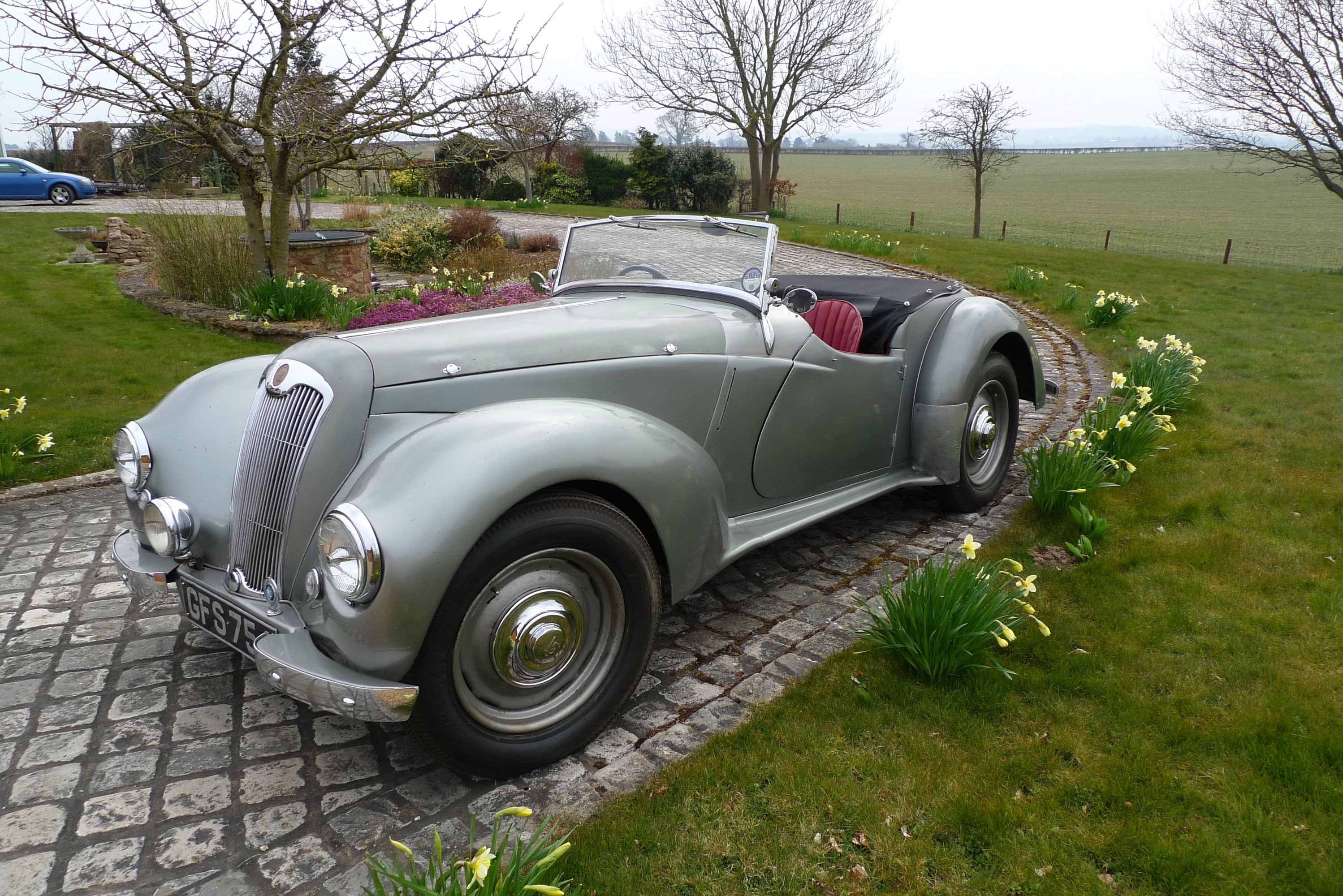
Click Here for Full Screen Image - Click Here to Download Image
 | 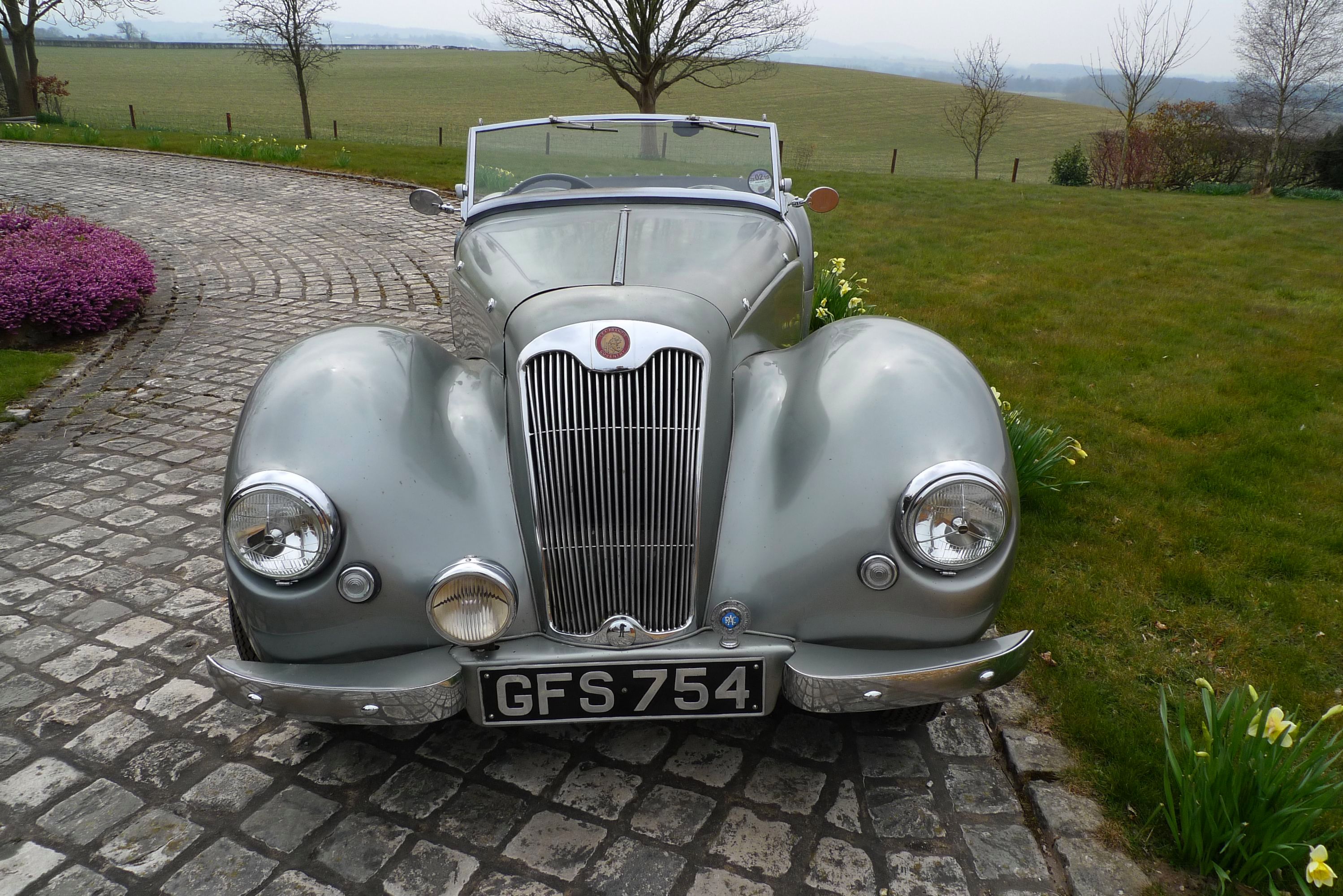 |  | 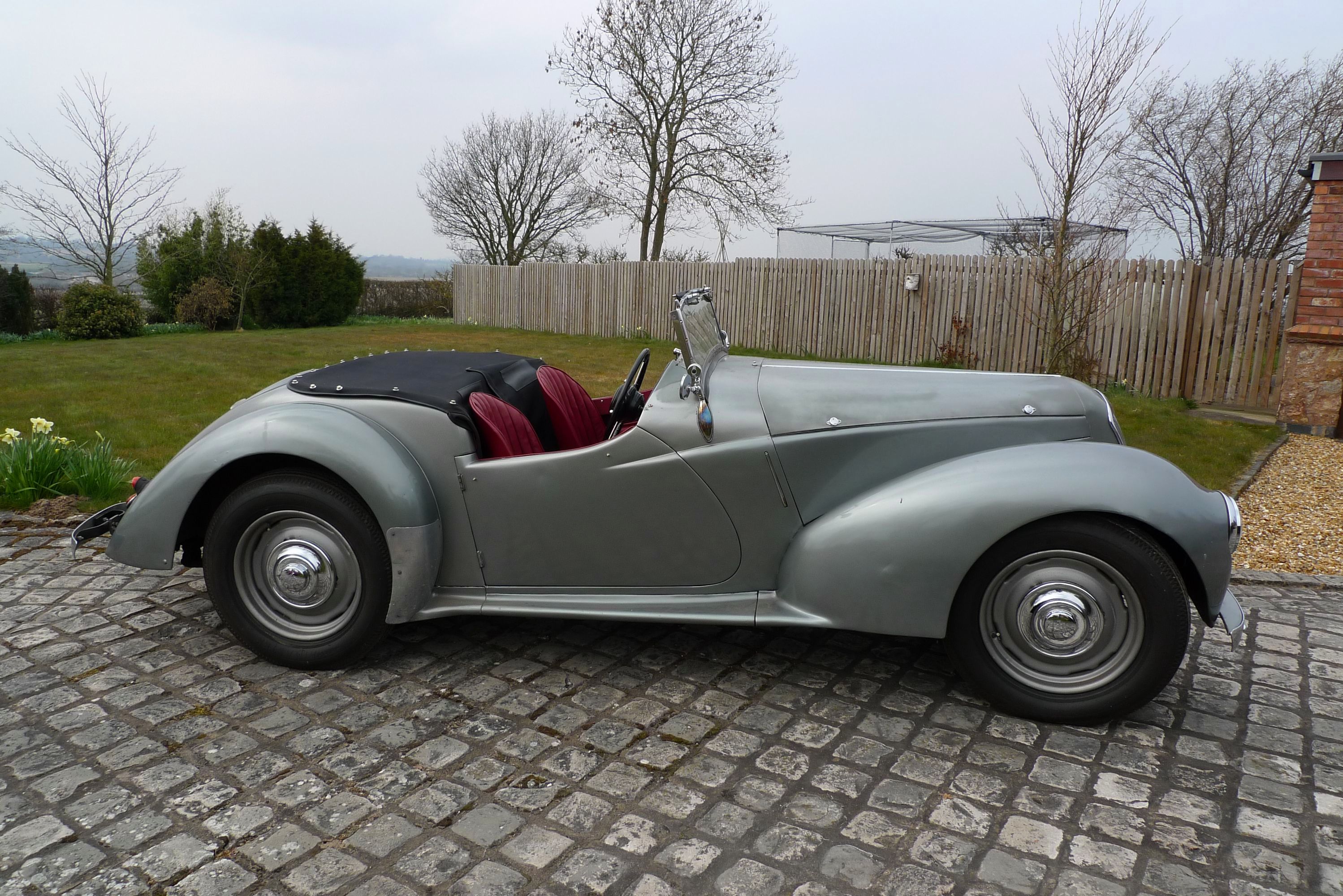 | 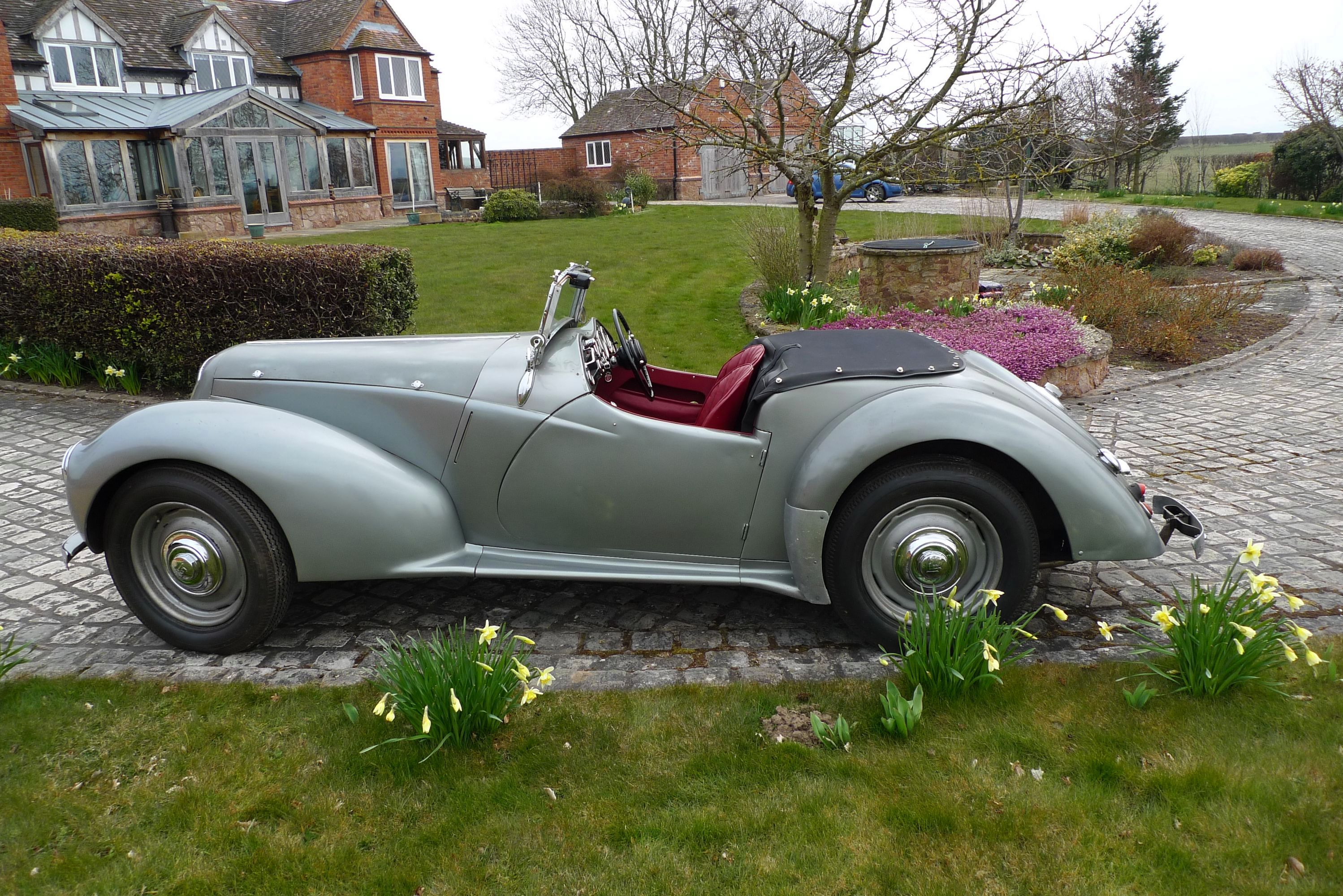 | |||||
 | 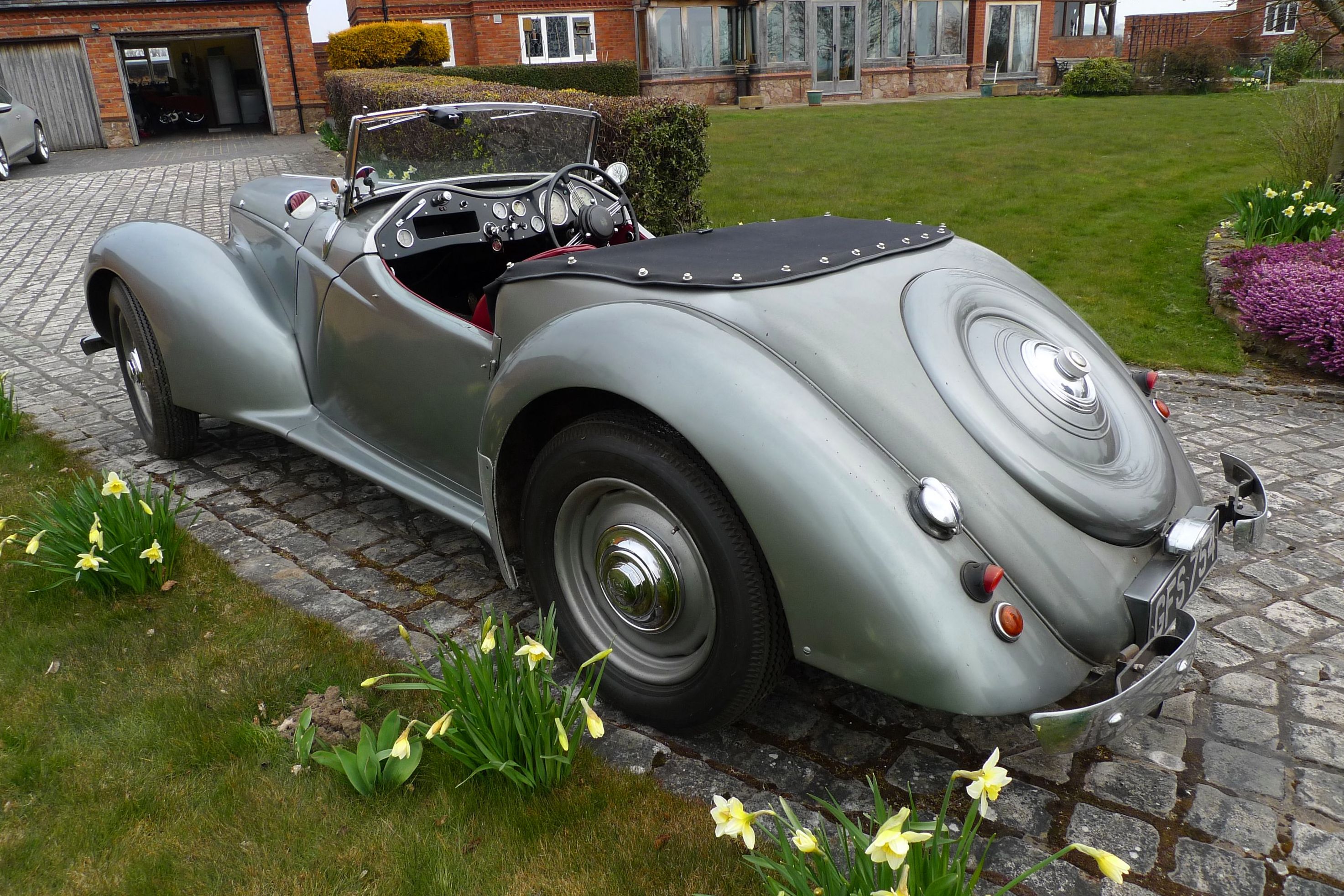 | 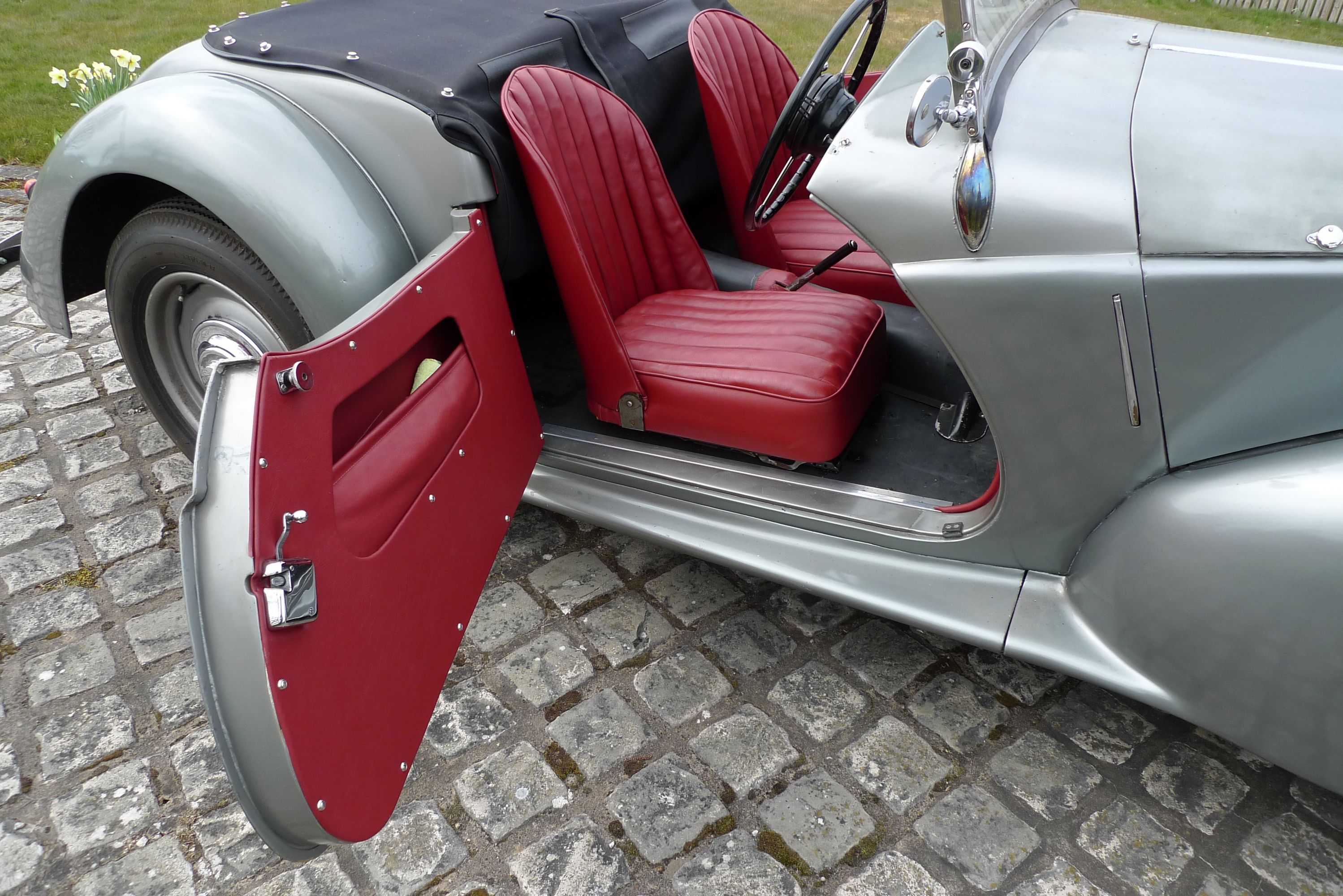 |  | 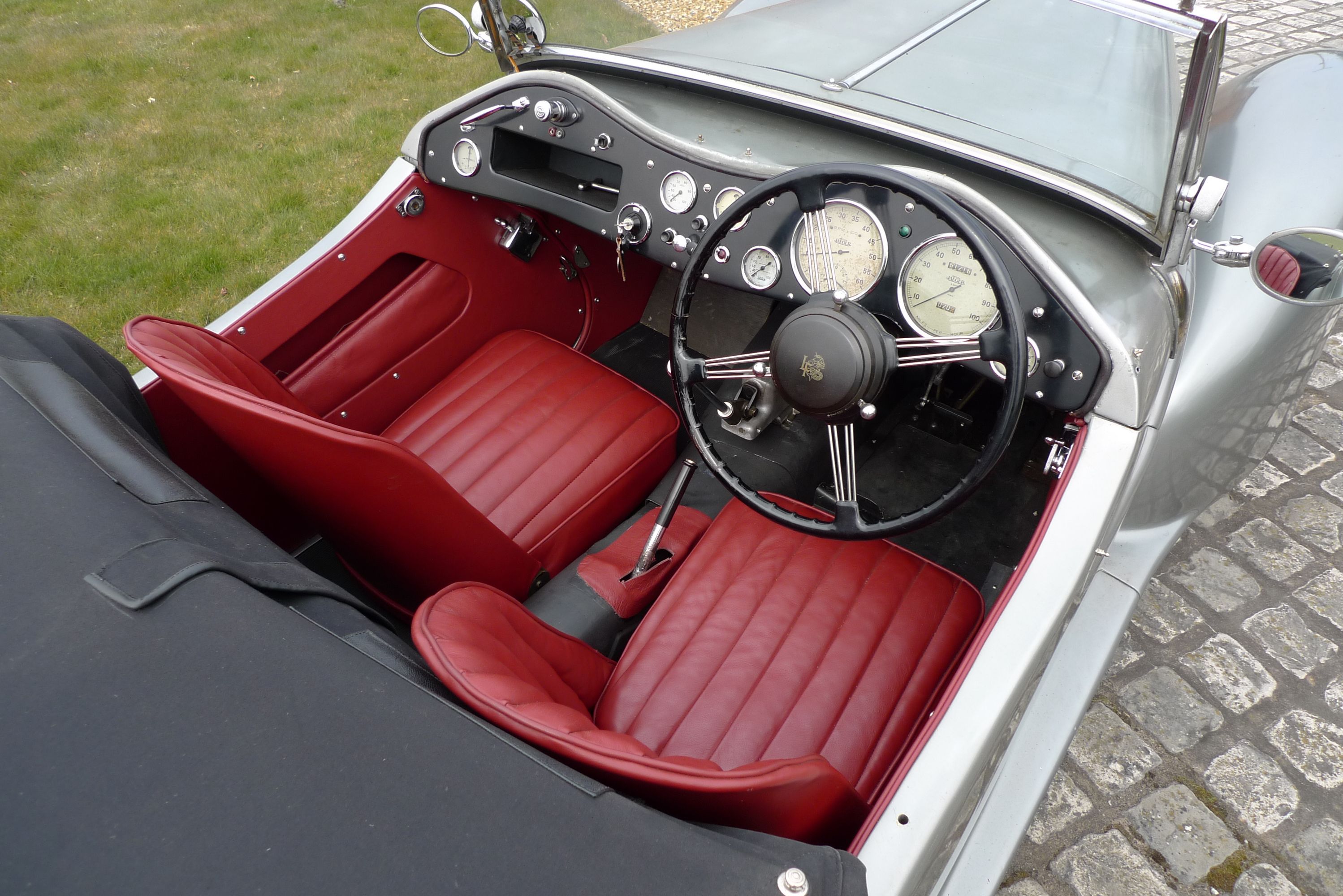 | |||||
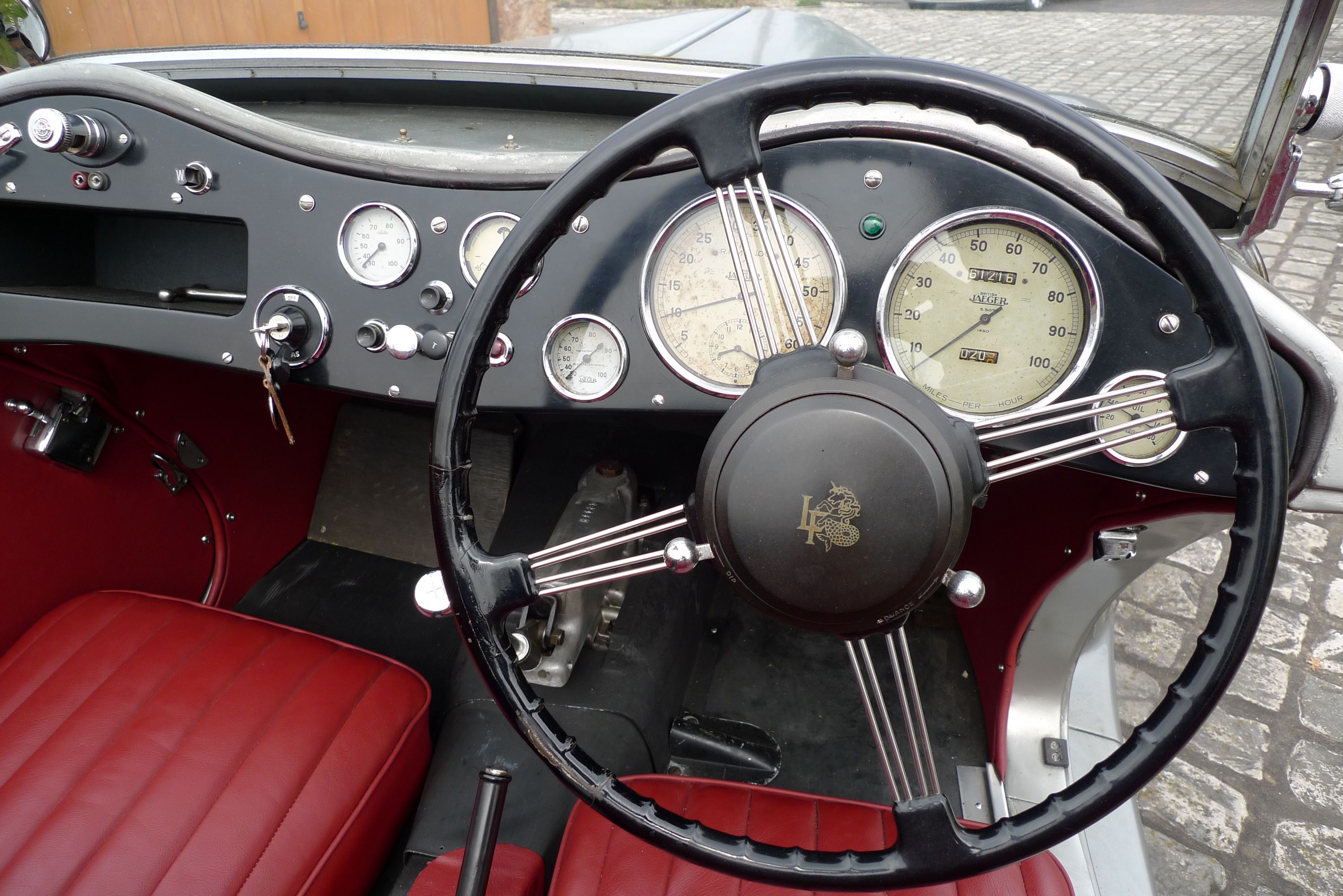 |  |  |  |  | |||||
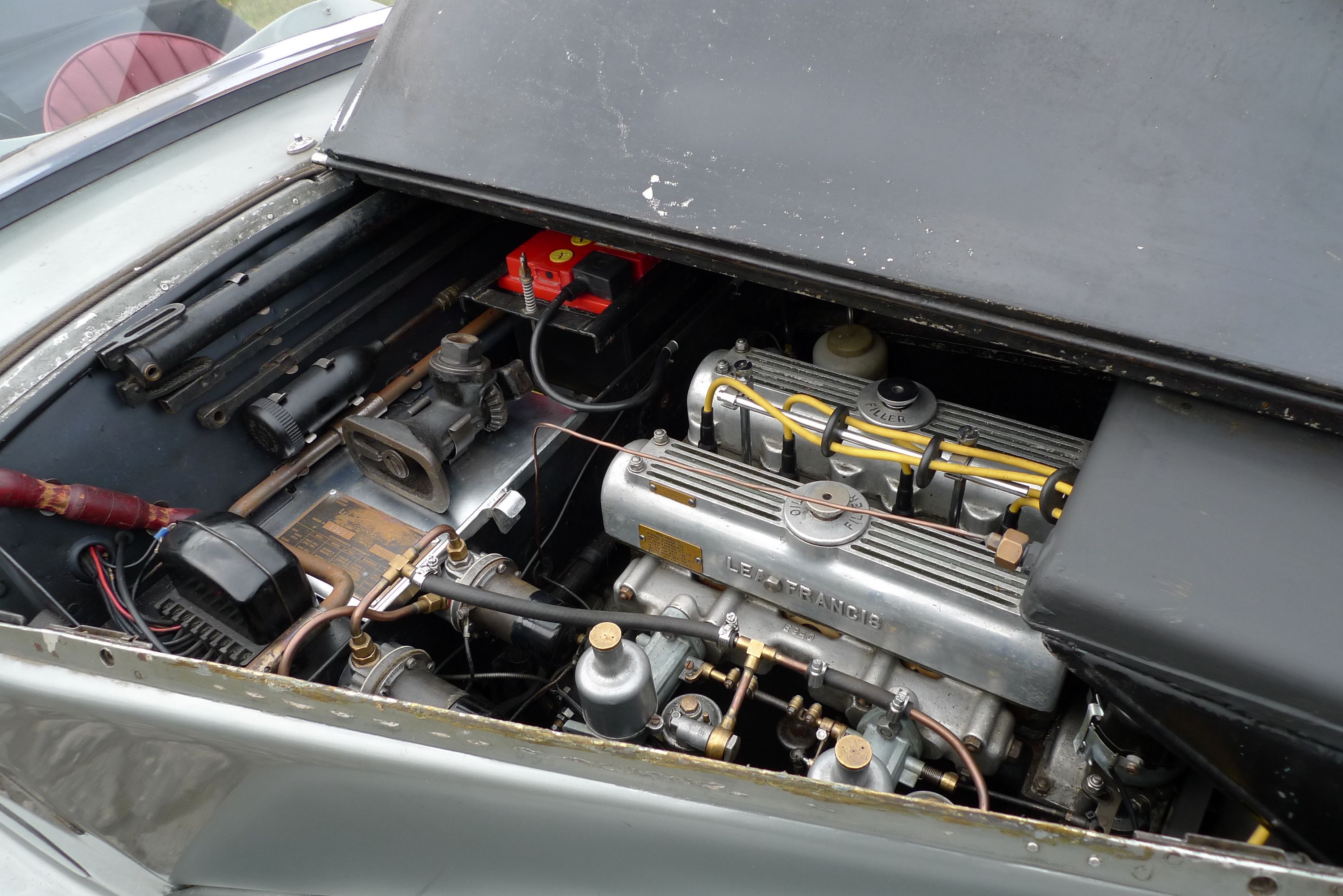 | 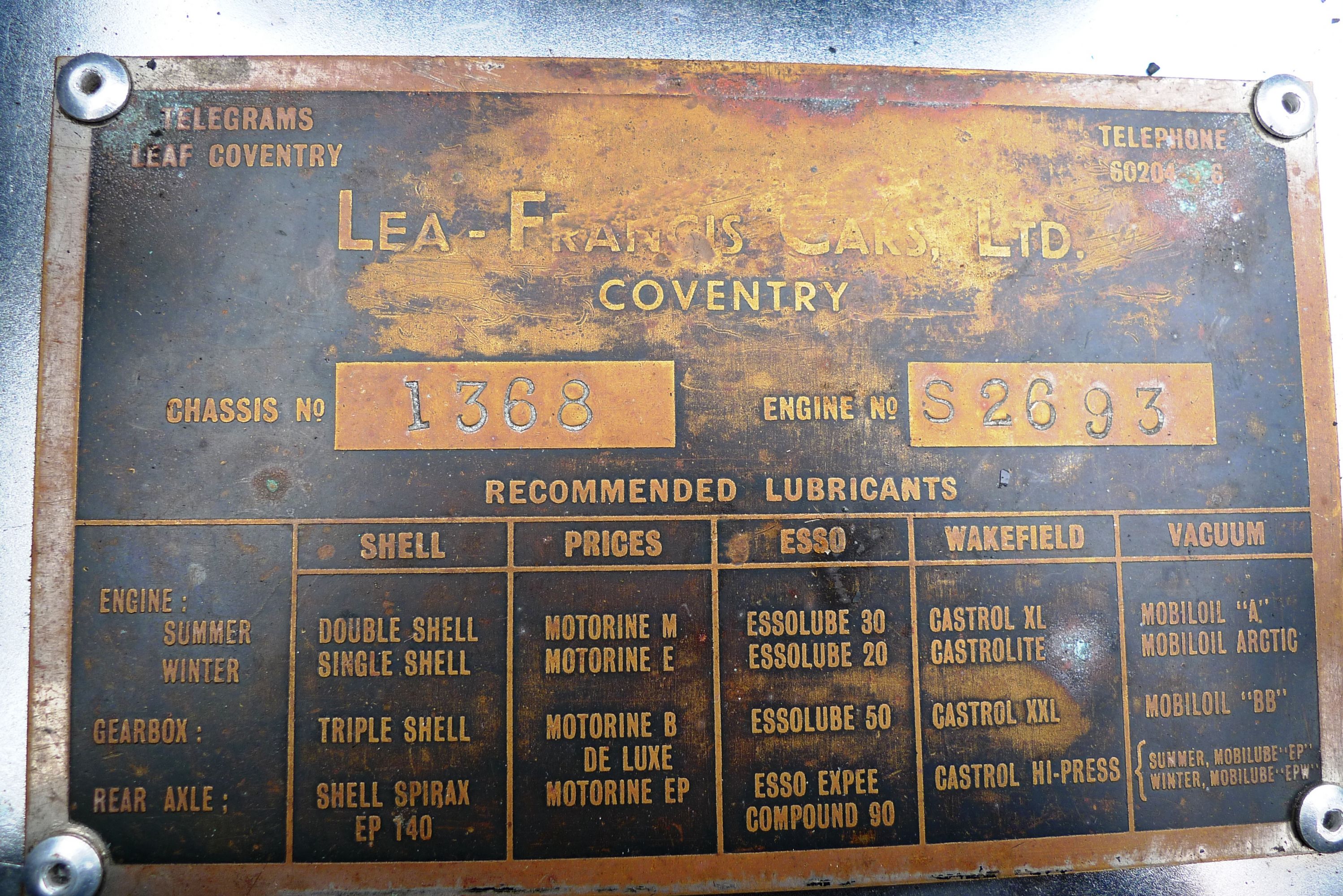 |  | 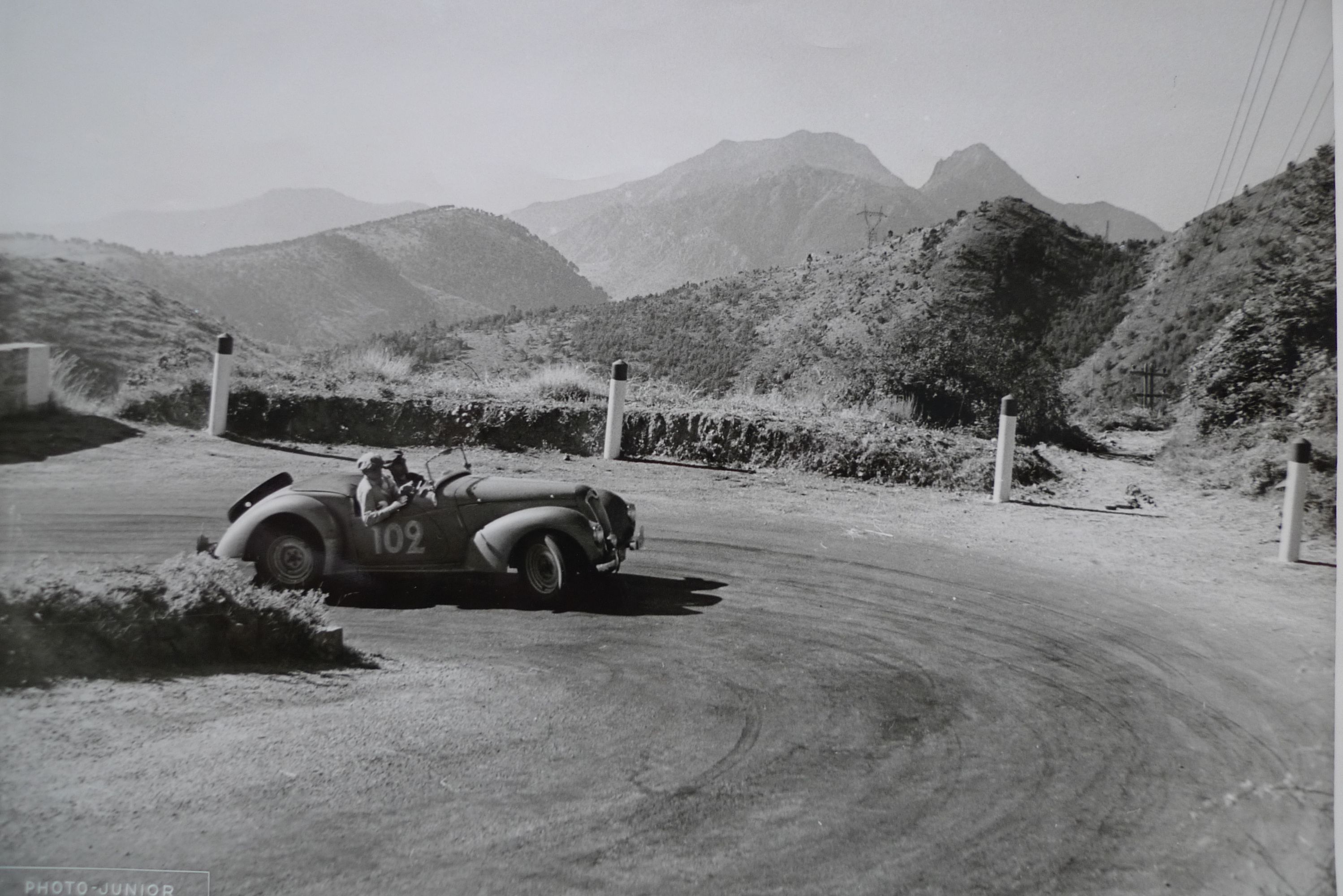 | 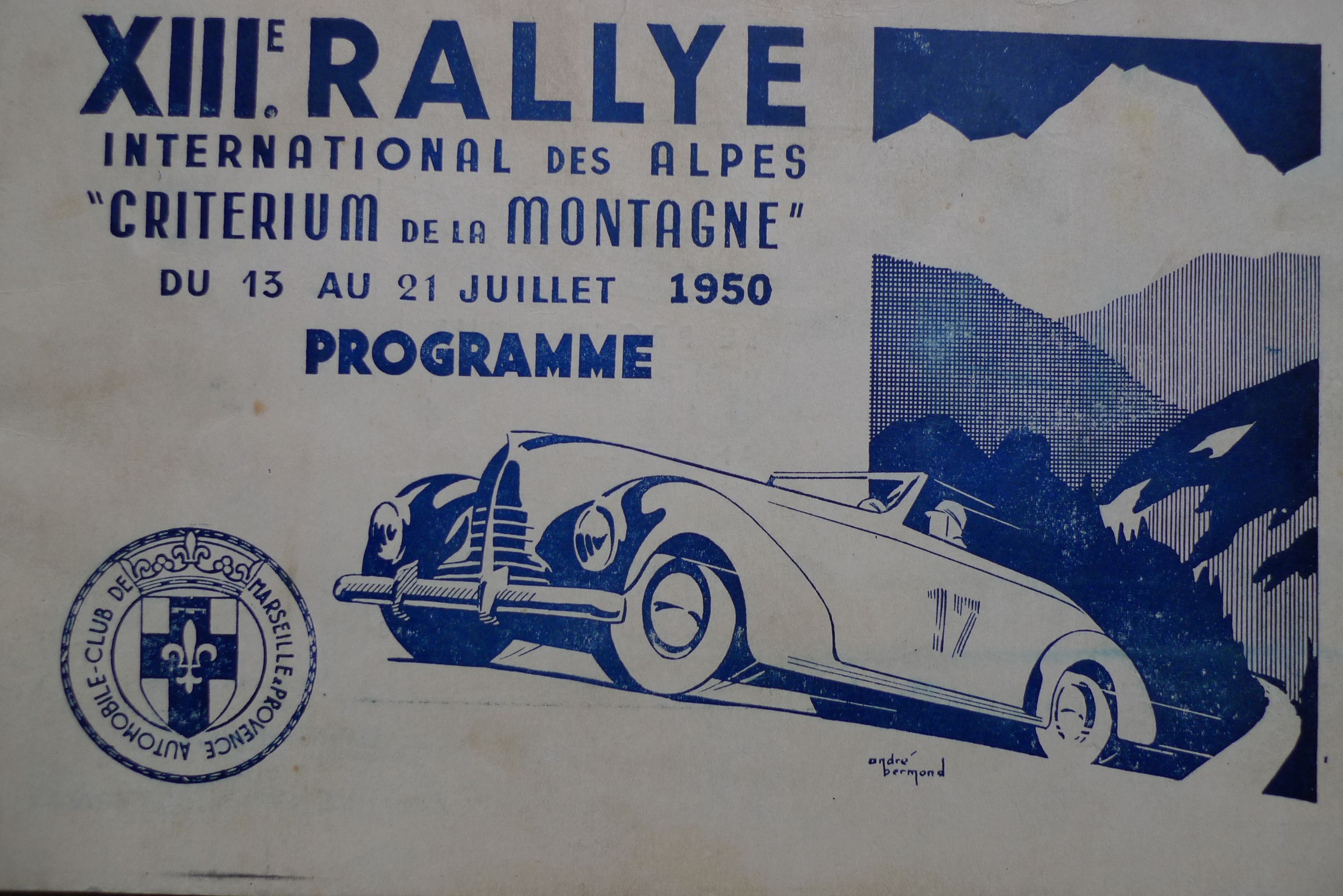 | |||||
 |  | 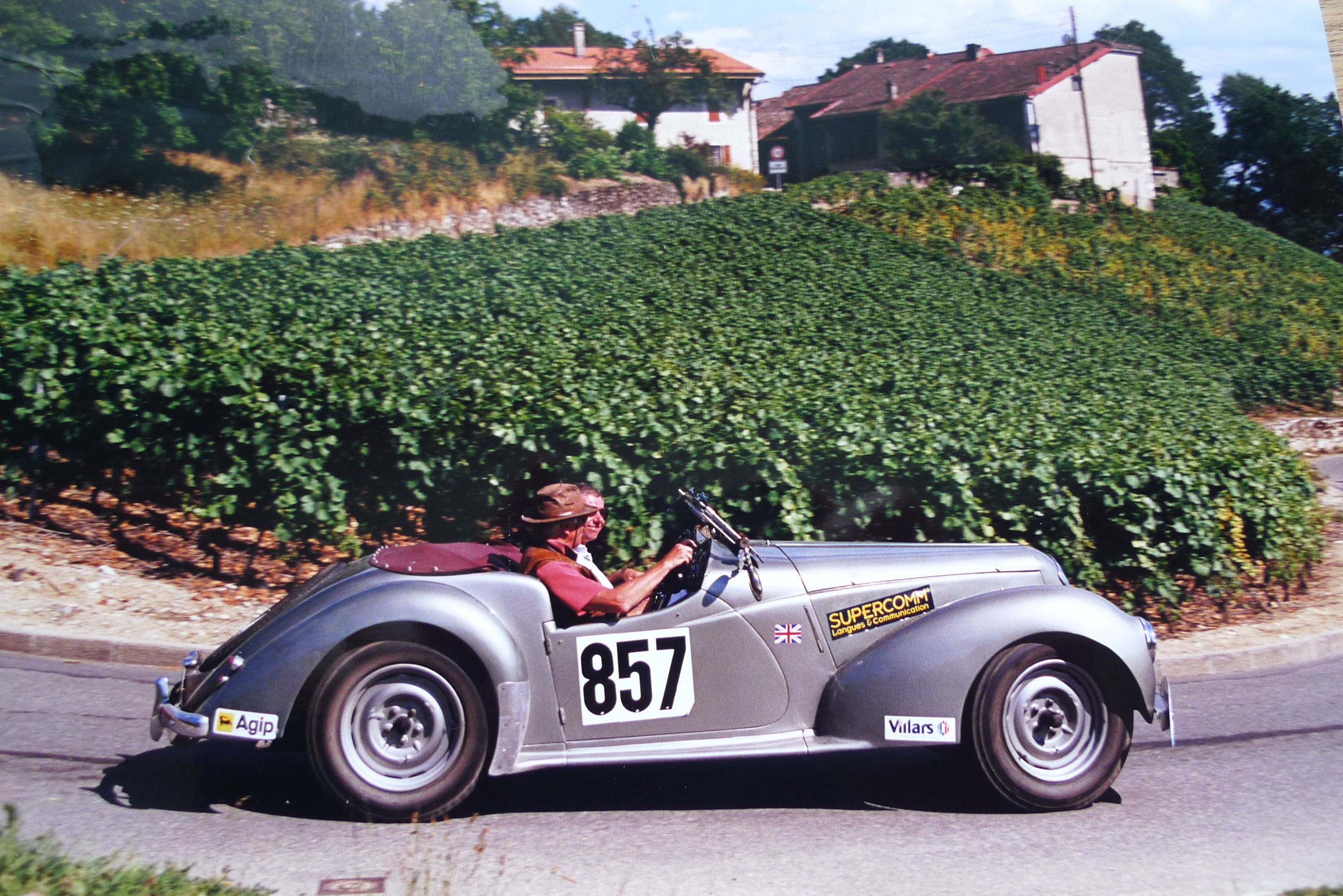 | 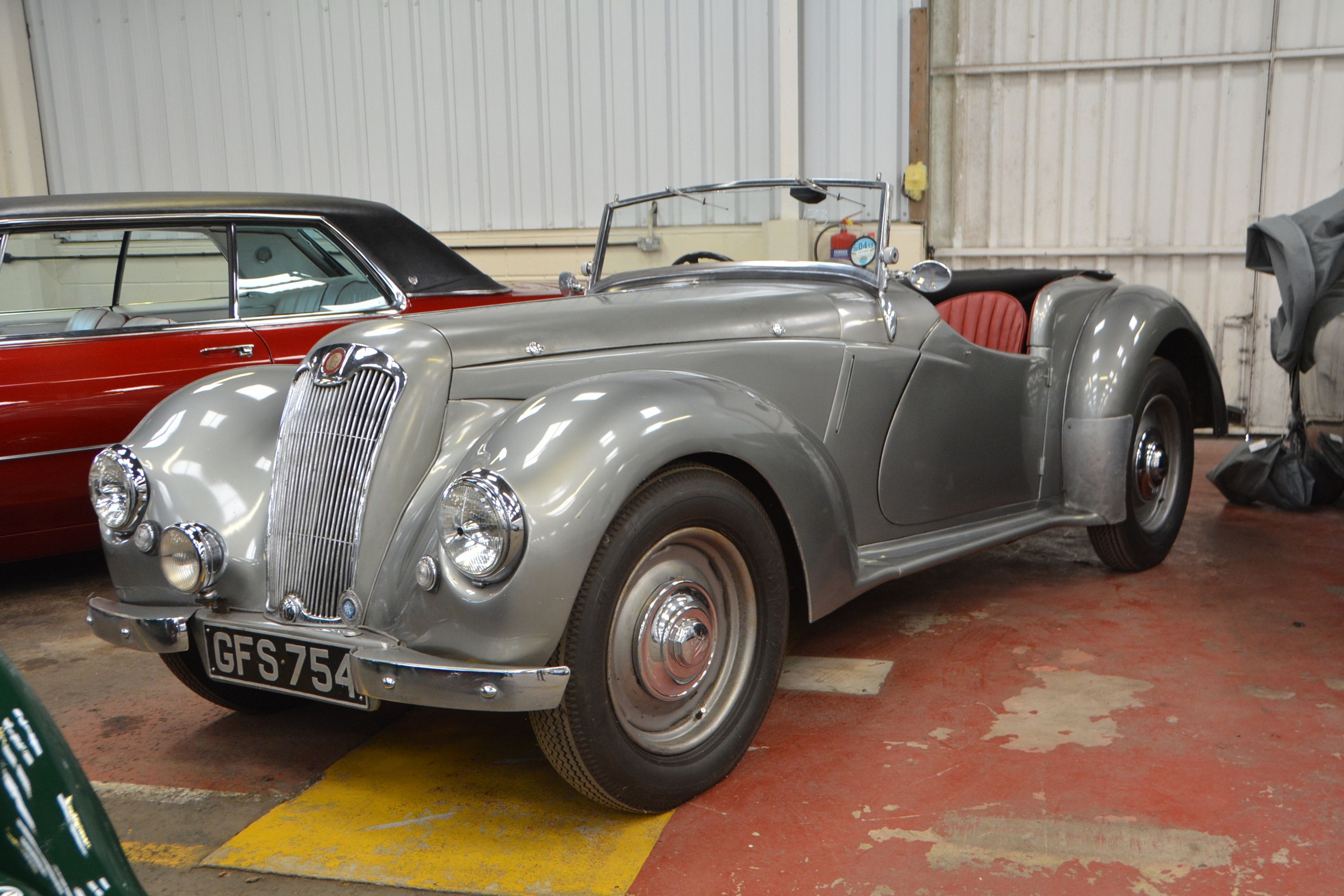 | 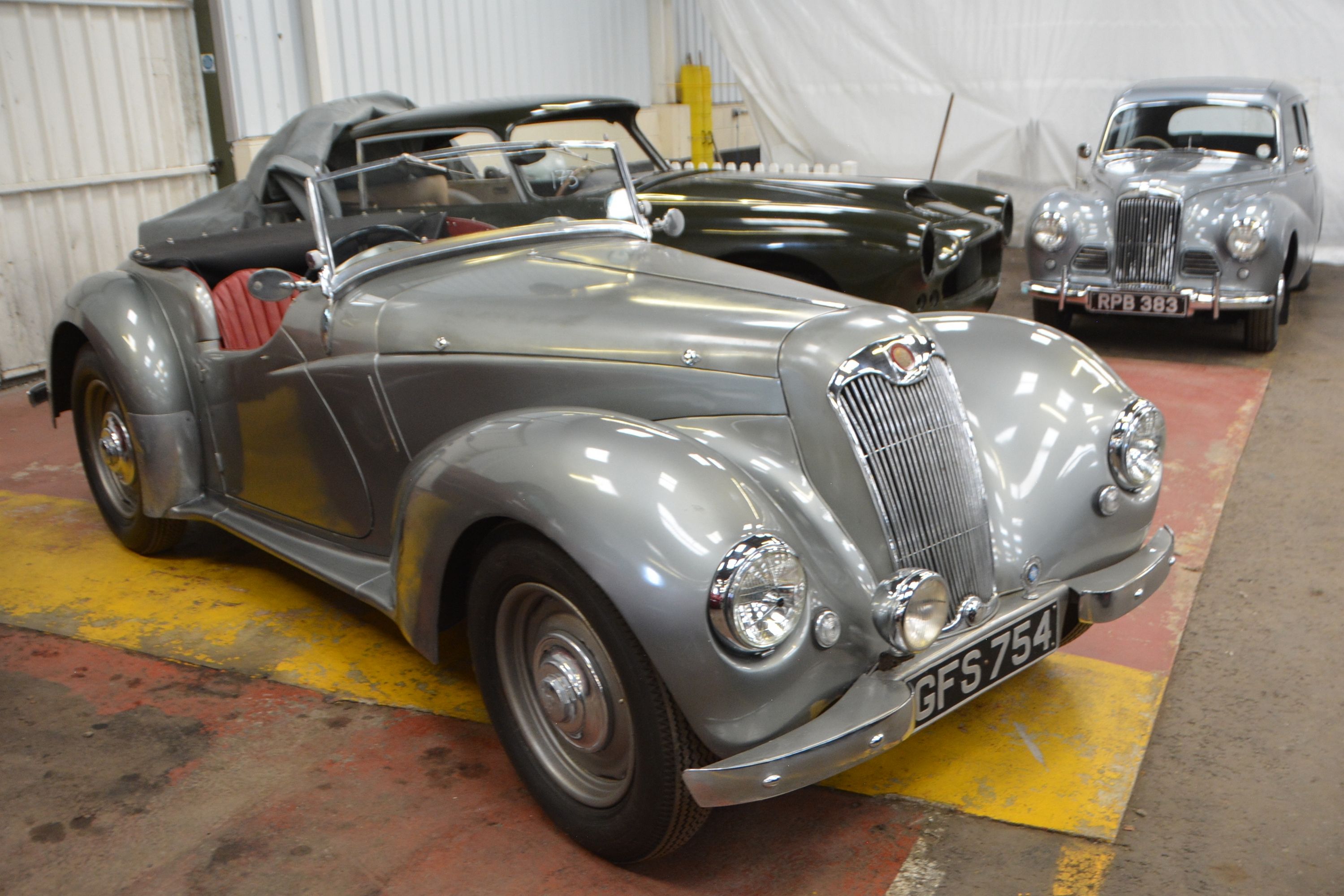 | |||||
 | 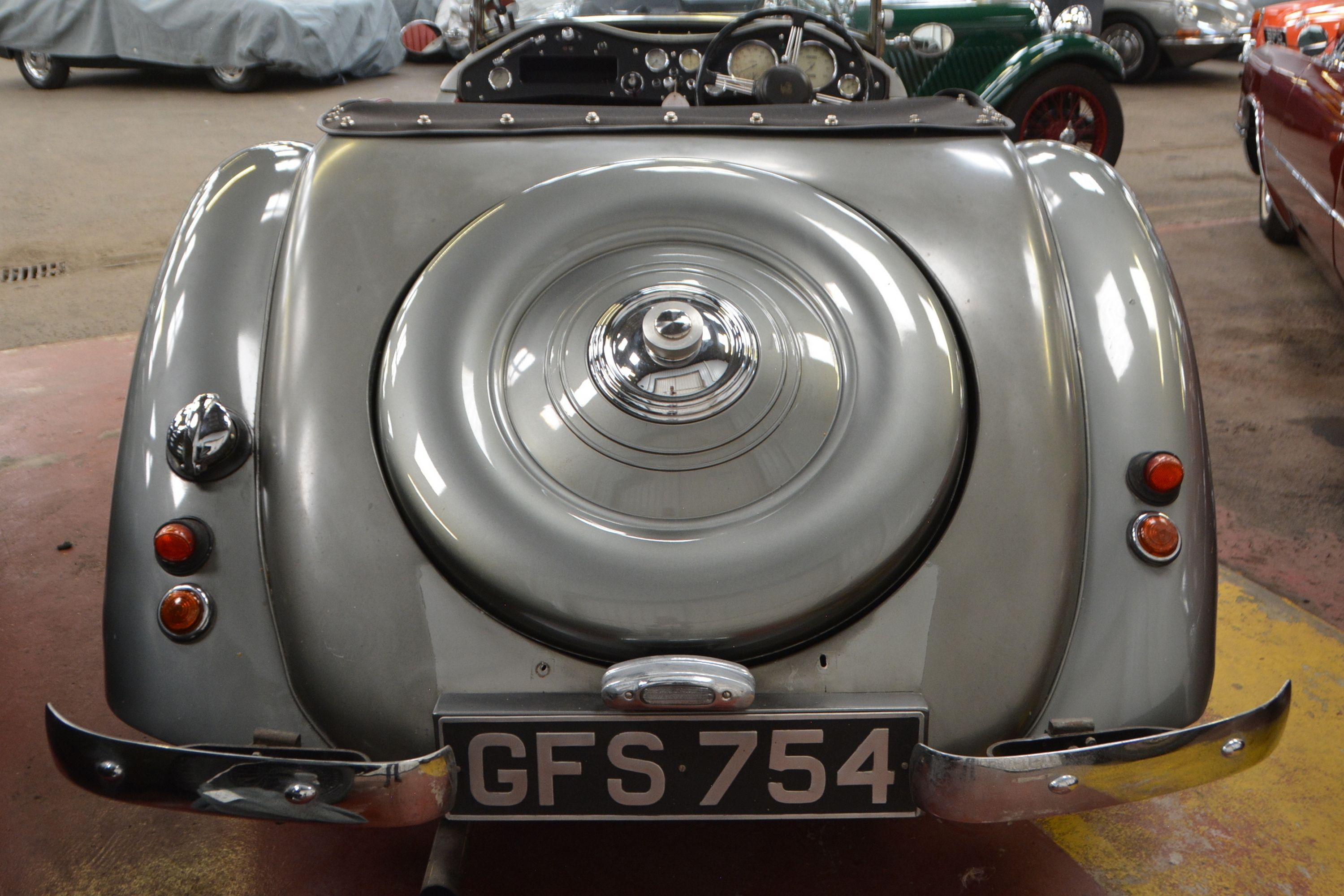 | 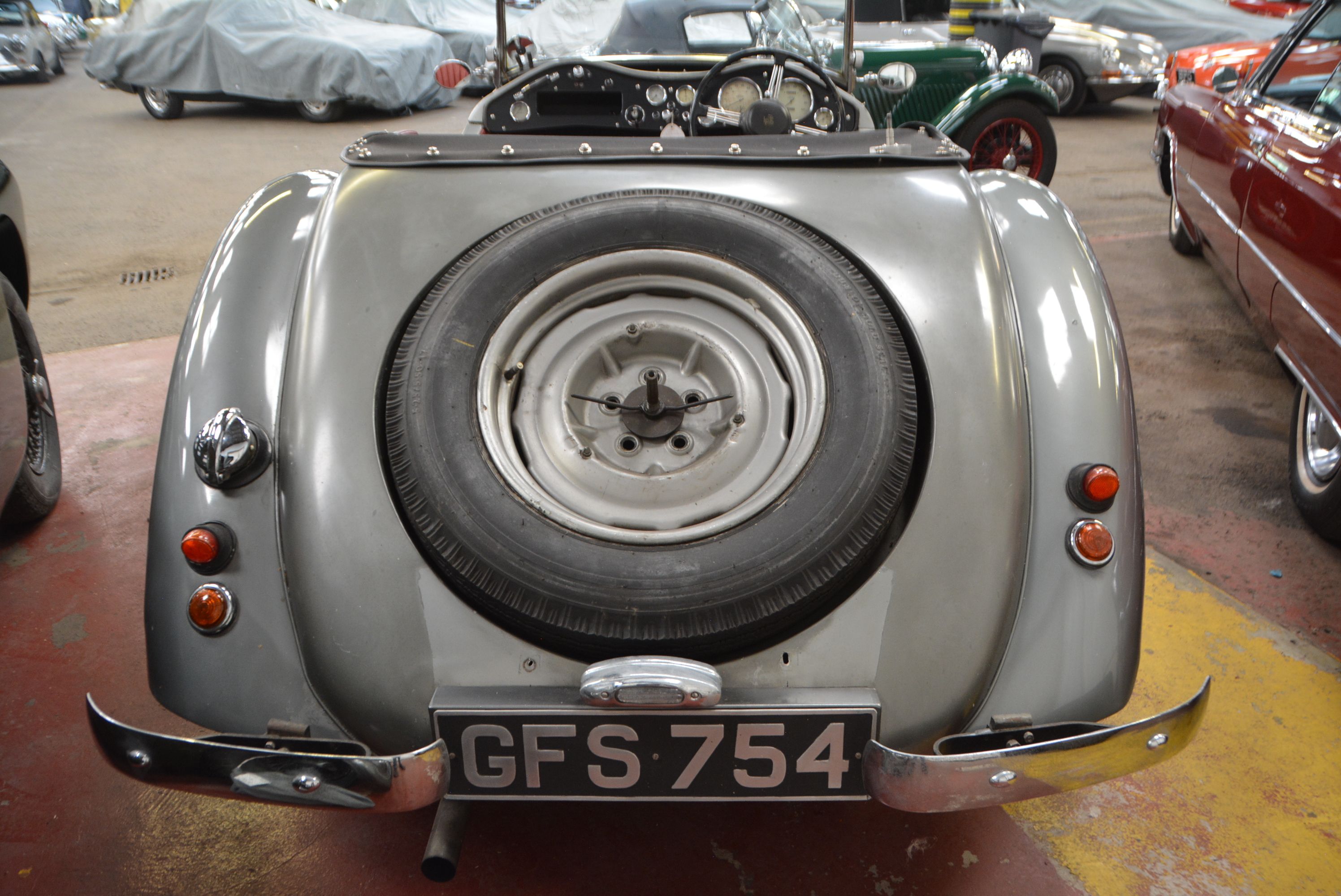 | 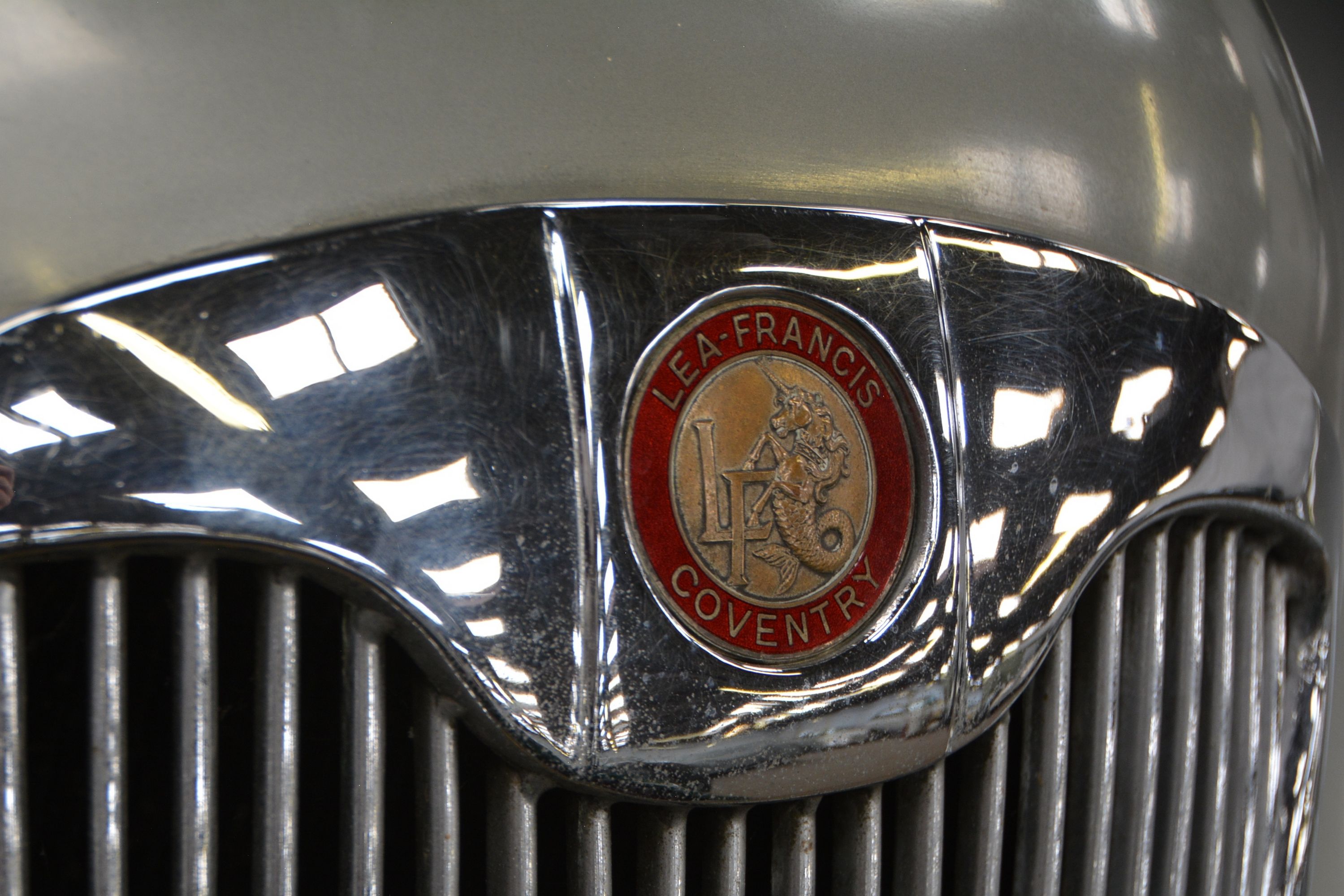 |  | |||||
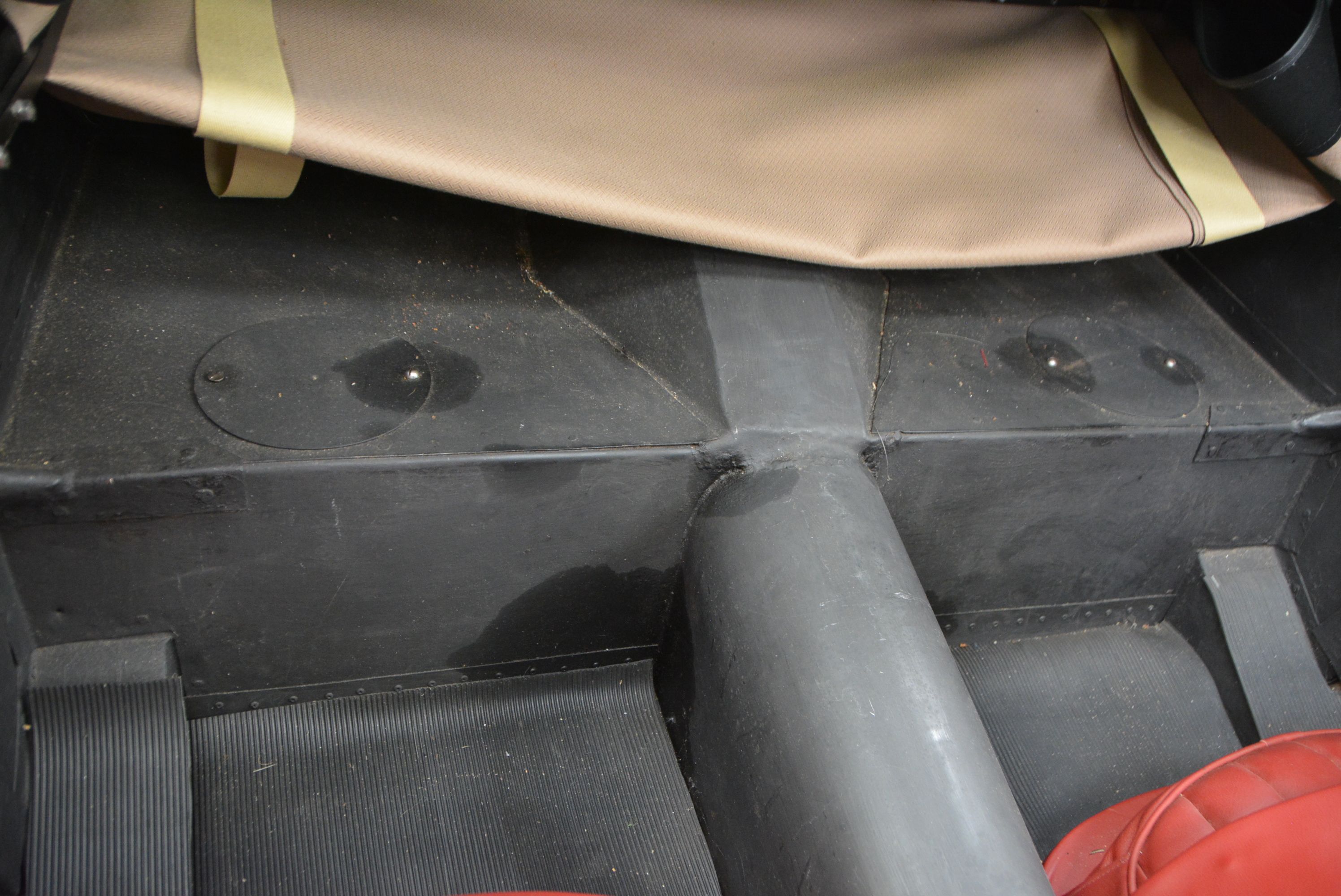 | 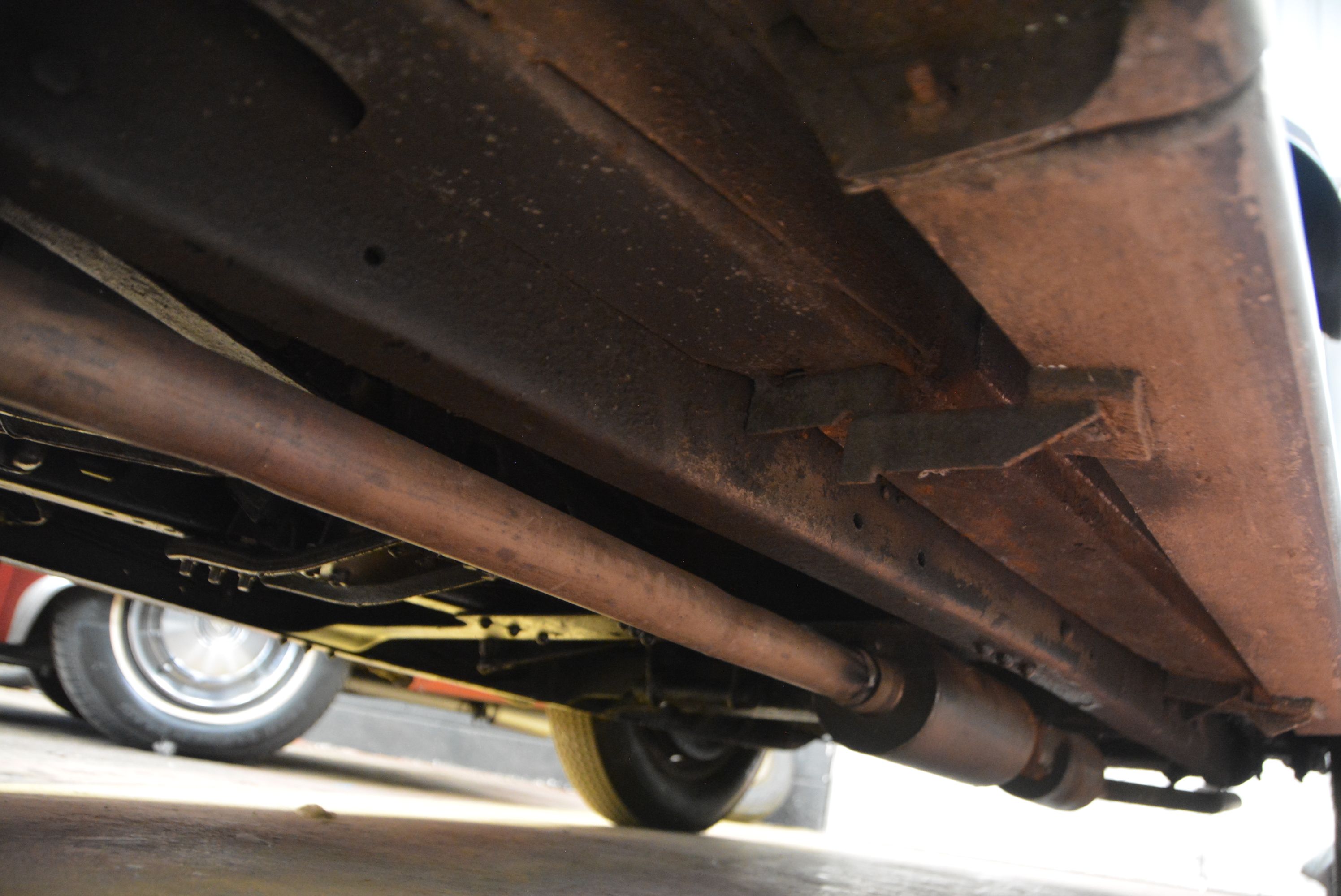 |  |  | 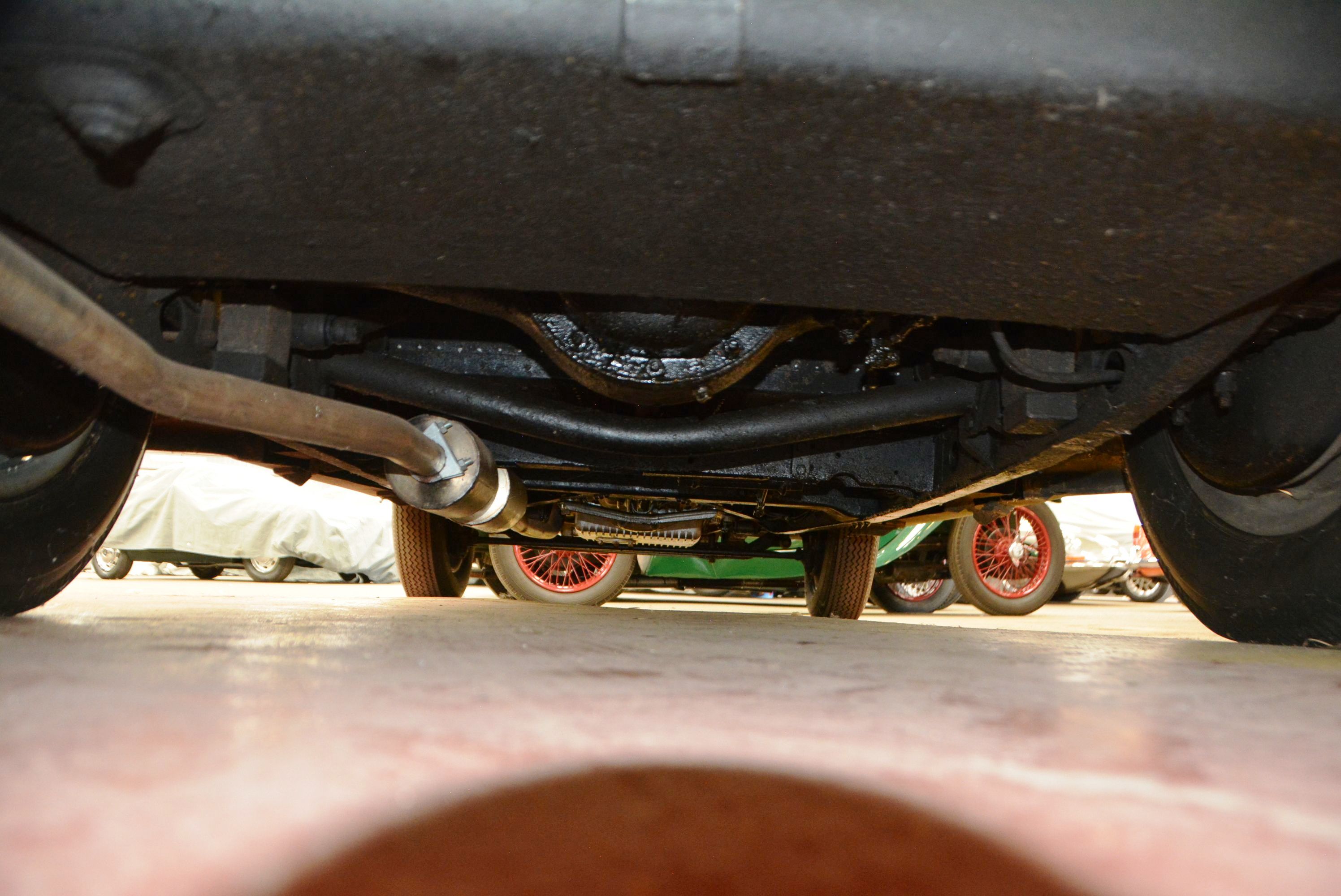 | |||||
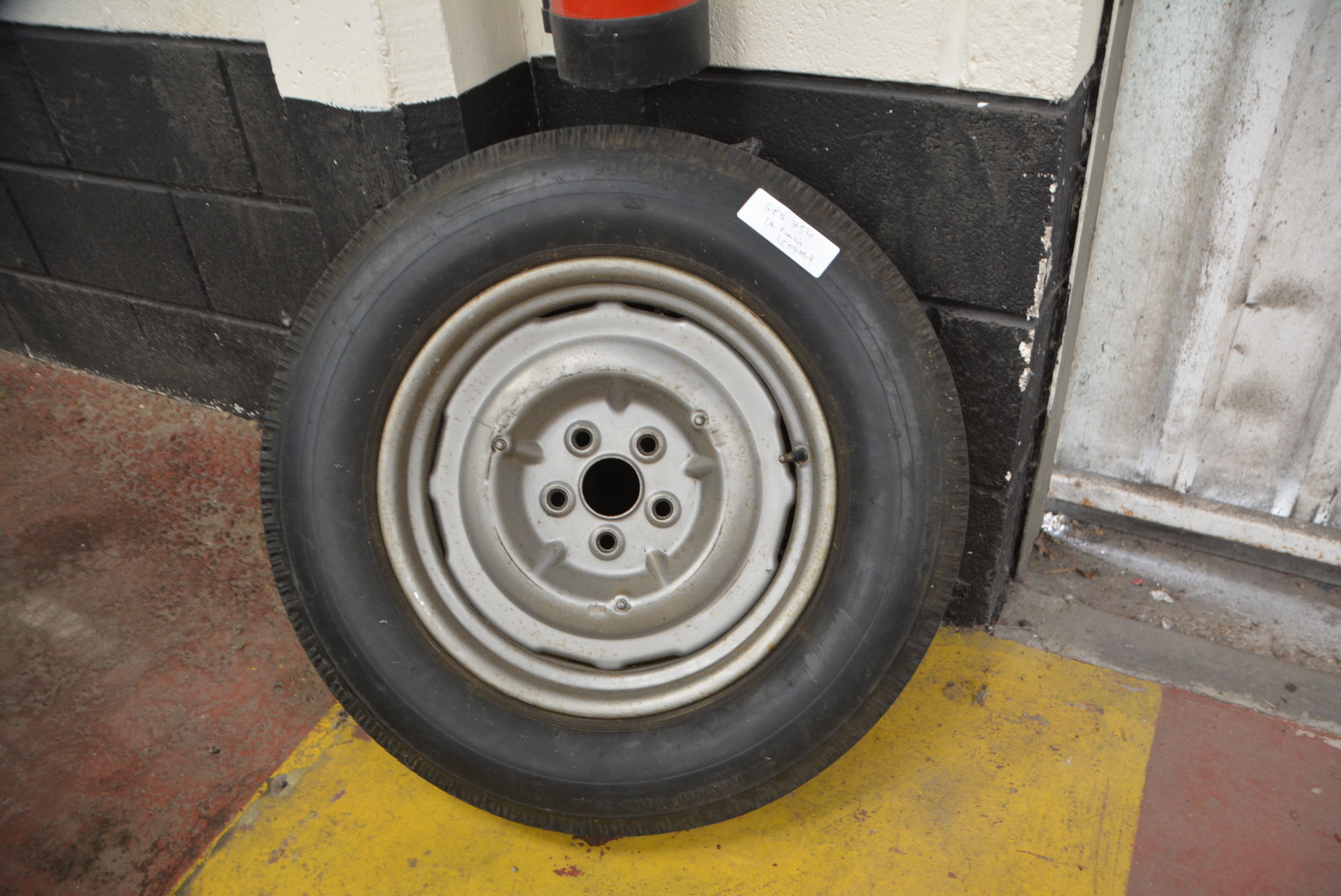 |
| Lot number | 173 |
|---|---|
| Hammer value | £32,480 |
| Description | Lea-Francis 14hp Sports |
| Registration | GFS 754 |
| Year | 1948 |
| Colour | Grey Metallic |
| Engine size | 1,767 cc |
| Chassis No. | 1368 |
| Engine No. | S2693 |
| Documents | Large history file - see text |
Like so many British car companies, the Coventry firm of Lea-Francis started out in life as manufacturers of bicycles in the 1890s and built their first motorcar in 1903.
Throughout the 1920s and ‘30s they concentrated on building small, sporting models such as the supercharged Hyper and the Ace of Spades which enjoyed much competition success. The 12hp and the 14hp were introduced in 1937 and continued until 1939 when the factory concentrated on manufacturing for the war effort.
Post-war car production commenced in 1946 with updated vehicles based on the pre-war designs. The 14hp Saloon and Sports were luxurious and sporty vehicles and were well-received, if expensive, appealing to those who preferred individuality and craftsmanship to mass production.
Power came from Lea-Francis's own Riley-style twin-cam overhead-valve 1.8-litre four, designed by Henry Rose and good for 90mph in Sports twin carb tune. Not only one of the best-looking engines ever made, it was also eminently tunable and found its way into numerous racing cars, notably the first Connaughts.
The styling of the aluminium-bodied Sports was particularly attractive with more than a hint of the gorgeous pre-war BMW 328 about it. Weighing only one ton, it also had very sprightly road manners. Costing a princely £1,276 it was always going to be a luxury that few could afford and just 118 examples were sold before production came to an end in 1949. Only 46 examples are known to survive and all are increasingly sought after today.
As the original factory build sheet confirms, this particular Sports was built in the summer of 1948 and was then driven over 300 miles from the Coventry factory up to the Scottish Lea-Francis distributor, Rossleigh Ltd of Edinburgh. A good test for any car, particularly in those days!
It was first registered to a Mr KJ Ross in August 1948 who promptly entered the car in the 1950 Rallye des Alpes, a gruelling 1,000-mile event through spectacular mountain passes in Austria, Germany, Italy and Switzerland. Ross came a creditable 8th in Class in an event that was dominated by Ian Appleyard in his famous ‘NUB 120’ factory-supported Jaguar XK120.
The large history file that accompanies the car contains several fascinating mementoes from this time including the bronze finisher’s medal awarded to KJ Ross, the official rally program and numerous press cuttings and photographs.
Ross kept the car until 1965 before selling it to GL Hancock Dore but it appears that Ross then bought it back again in 1975 and kept it until 1990. It then passed to a Mr Swete in 1990 who immediately had the engine rebuilt by Barry Price of Lea-Francis cars when a new clutch was also fitted. He kept the car for the next 12 years, successfully completing the Historic Rallye des Alpes event in 2000, replicating the feat that KJ Ross had achieved exactly 50 years before. Again, there are photographs commemorating this event in the history file.
The 5th owner acquired the car in 2008 from LV Weeks and used it only very sparingly. He had the interior retrimmed in red leather (the original colour, as is the metallic grey paint), the dash instruments rebuilt and much of the chromework replated. He also fitted a new hood, tonneau and sidescreens along with a bespoke stainless steel exhaust system and a new set of tyres which give the car a really purposeful stance. A battery isolator switch is also discreetly fitted for added security.
Our vendor acquired the car in 2013 and has kept it tucked away in a nice dry garage under a protective cotton cover. Started occasionally, the LeaF has still only covered some 9,000 miles since the engine was rebuilt. Last MOTd and on the road in 2009, GFS 754 now needs a good tune-up and would no doubt benefit from a precautionary checkover before a third Alpine Rally is attempted.
The current indicated mileage of 61,200 is thought to be genuine and is largely borne out by the substantial history file which contains much interesting correspondence between previous owners and Lea Francis Cars who have maintained the car on-and-off throughout its 65-year life to date. A large amount of technical literature is also included along with an original owner’s handbook, a green continuation logbook from 1965, a current V5C, a sixth spare wheel and tyre and sundry other spares.
Although the paintwork is a little faded here and there, this is a wonderfully honest and correct car that wears its 71 years remarkably well. One of only 46 known survivors and with an interesting history from new, it is crying out for more regular use and would sit well in any collection.